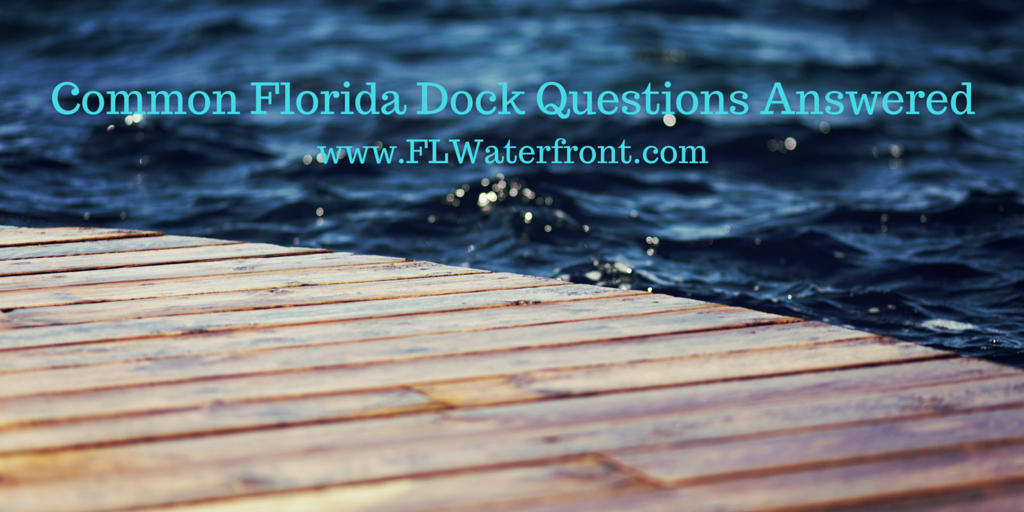
Common Florida Dock Questions Answered
It’s important to know if you can build a dock on your Florida Waterfront Property. It’s also very important to know if your current dock is up to code. Here are some answers to commonly asked dock permitting questions.
Did you know that a permit or other written authorization from the State of Florida is not required for a single-family dock in an artificially created water body where:
(1) the construction will not violate water quality standards;
(2) the dock will not impede navigation;
(3) the dock will not affect flood control; and the dock, including boat lifts, is 1,000 square feet or less in surface area
Did you know that a permit or other written authorization from the State of Florida is not required for the repair or replacement of existing docks or mooring piles that are:
(1) not located within an aquatic preserve or manatee sanctuary;
(2) still functional or only recently damaged by a storm or accident;
(3) to be replaced in the same location, configuration, and dimensions as the existing structure
Did you know that a permit or other written authorization from the State of Florida is not required for a single-family dock that meets the following criteria:
(1) is not located within an aquatic preserve or manatee sanctuary;
(2) the dock, including boat lifts, is 500 square feet or less in over water (including wetlands) surface area if located in an “Outstanding Florida Water”;
(3) the dock, including boat lifts, is 1,000 square feet or less in over water (including wetlands) surface area if not located in an “Outstanding Florida Water”
Interested in Florida Waterfront Property? Click the beach view below!
Did you know that docks that are exempt from the requirement for a permit or other written authorization from the State of Florida are subject to the following limitations:
(1) they may be used only for recreational, noncommercial activities;
(2) there is no dredging or filling except for that necessary to install pilings;
(3) the dock and pilings do not impede the flow of water or navigation;
(4) only one dock is allowed per lot and no more than one dock is to be constructed per single-family home; and
(5) the structure does not unreasonably interfere with riparian rights
Did you know that docks that are not exempt from the requirement of obtaining written authorization from the State of Florida because they are located within an aquatic preserve or manatee sanctuary and are located on State owned submerged lands, may qualify for a “Letter of Consent” if the dock meets the following criteria:
(1) the dock is set back a minimum of 25 feet from the side property lines or 10 feet for marginal structures;
(2) the dock does not extend beyond 20% of the width of the water body, or over 500 feet, whichever is less;
(3) the access walkway of the dock is no more than 4 feet wide;
(4) the terminal platform is no larger than 160 square feet; and
(5) any part of the dock over seagrass must be elevated at least 5 feet above the mean or ordinary high water line
Visit FLwaterfront.com for more information.
David M. Levin is a shareholder with the law firm of Icard, Merrill, Cullis, Timm, Furen & Ginsburg, P.A. of Sarasota, Lakewood Ranch and Punta Gorda, Florida. He limits his practice to environmental and waterfront property law, including waterfront property closings.
Mr. Levin has also been involved in environmental rule making and administrative rule challenges, and has represented both public and private clients in environmental litigation before federal, state, and administrative tribunals.
Mr. Levin has authored several published articles on environmental law topics and is a frequent lecturer on the subject.





